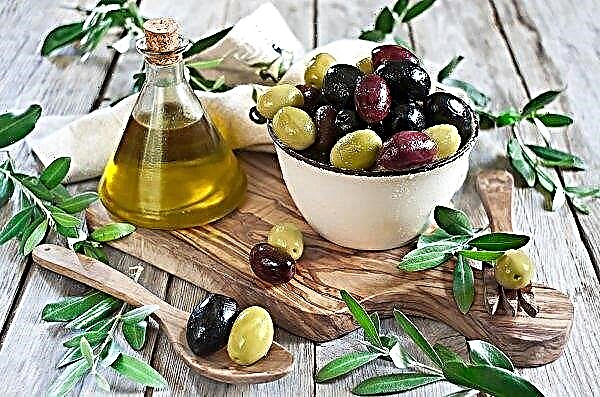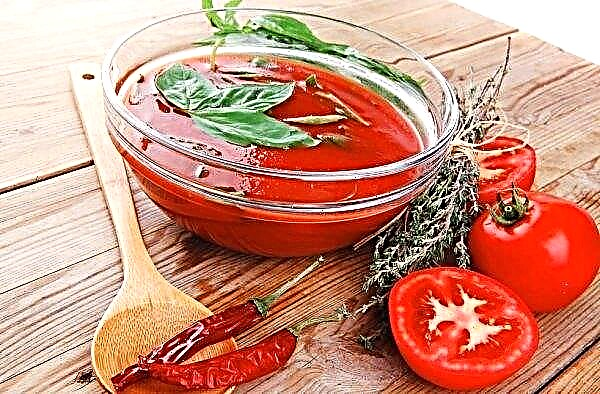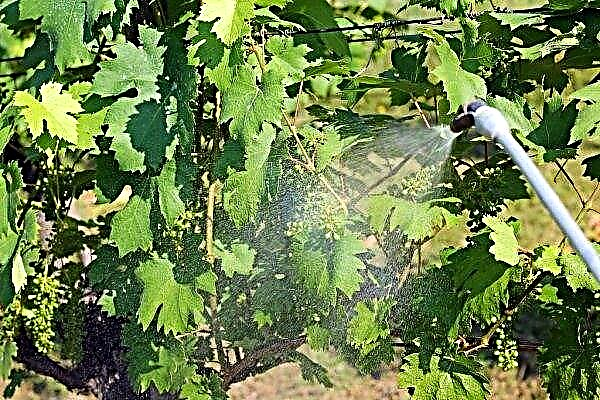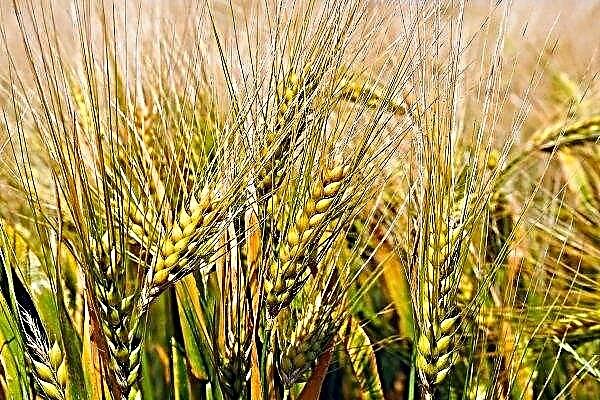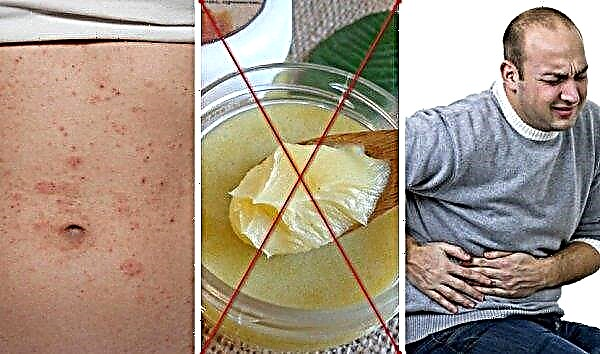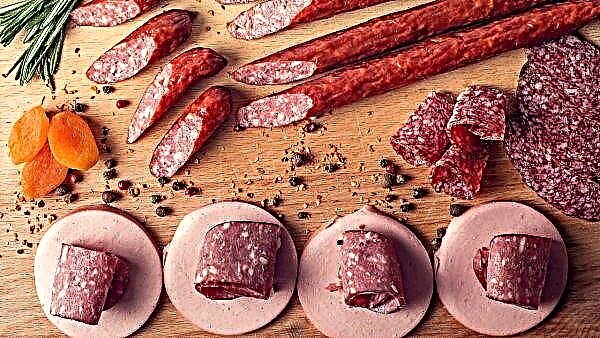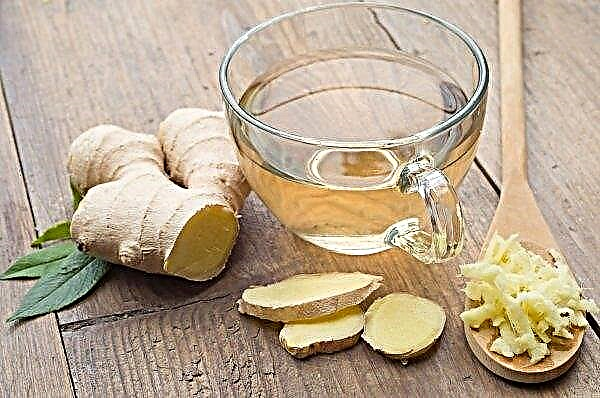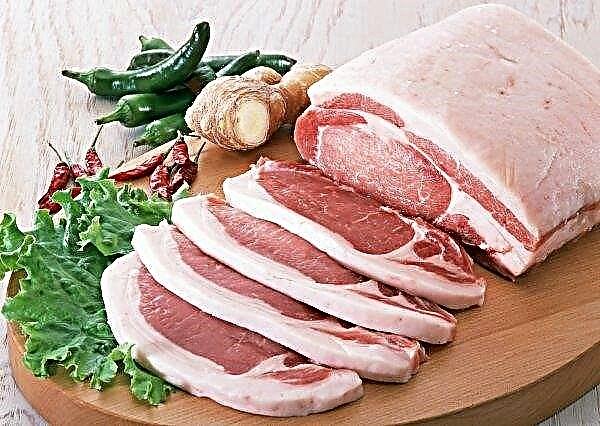There are many varieties for growing tomatoes in summer cottages and gardens. Especially popular are crops that are equally fruitful both in open ground and in greenhouses. Such a universal variety is tomato "Moscow delicacy". The article introduces the features of the variety, including its cultivation and care.
Specificity and description of the variety
The variety was bred by the breeders of the Shchelkovo research and production corporation in the Moscow region, in 2001 it was listed in the State Register of Varietal Crops of the Russian Federation. The culture is recommended for cultivation in all regions of the country, but in a cold climate it is preferable to plant in a greenhouse.

Description and characteristics of the variety:
- indeterminate plant, the bush can grow up to 185 cm;
- the bush branches well, so it is advisable to form it in 2-3 stems;
- leafy bush (it is desirable to remove foliage at the base of the stem);
- the first fruit brush forms above the ninth leaf;
- ripening occurs within 122 days after planting seedlings;
- cylinder-shaped fruits, elongated. The color is bright red, the pulp is dense, not watery, but juicy, with 2 seed chambers, the skin is dense. The taste is sweet, there are many sugars in the composition;
- productivity - from one bush when ripening, you can collect up to 4 kg of fruits with a weight of up to 150 g each;
- well preserved, has the ability to long transportation;
- late blight resistance is average;
- fruiting for a long time.
On the basis of the variety, a hybrid with the name “Moscow delicacy creamy f1” was bred.
The hybrid is different from the parent plant.
Its characteristics are already different:
- yellow color of the fetus;
- each weight up to 70 g;
- bush growth up to 140 cm.
 Hybrid "Moscow delicacy creamy f1"
Hybrid "Moscow delicacy creamy f1"
Advantages and disadvantages
The “Moscow delicacy” has many advantages, there are also disadvantages.
- Grade Advantages:
- grown in greenhouses and in open areas;
- dense pulp;
- sweet taste;
- even fruiting;
- stable yield;
- good transportability.
- long storage.
Did you know? Tomato juice is an official drink in the US state of Ohio.
- Who is already familiar with this variety, points to some disadvantages of culture:
- needs formation;
- susceptible to late blight;
- requires garter support.
Features of growing varieties
The main advantage of the variety is that it is not hybrid (that is, its seeds are suitable for propagating the crop).
Did you know? Tomatoes harvested at the stage of milk maturity ripen faster if placed on ripening next to apples.
Microclimate
To grow the “Moscow delicacy” you need to properly care for it. So, it is important to clarify the seedlings, because with a lack of light, the stems and foliage are deformed.
A special microclimate is also needed:
- air humidity - 50%;
- soil moisture - 80%;
- temperature - + 18- + 22 ° С.
Seed sowing technology
Sowing is carried out 2 months before transplanting to a permanent place, the timing depends on the climatic conditions of the region. If planting is planned in May, then sowing seedlings is carried out in late February.

Seeds are soaked in a weak solution of potassium permanganate to disinfect and reveal empty ones. After drying, they are re-soaked in any growth stimulator.
The substrate for seedlings can be purchased in a specialized store or prepared independently.
For the land mixture take:
- garden land - 2 parts;
- peat - 1 part;
- wood ash - 0.5 parts;
- sand - 0.5 parts.
Containers for seedlings should be with drainage holes. After filling the boxes, the soil is moistened from the sprayer, the seeds are planted in rows, after 3 cm to a depth of 1.5 cm. The crops are sprayed and covered with a film
Seedling Care
After emergence, the film is removed. Watering is carried out as the top layer dries. Seedlings do not require top dressing, as they are characterized by good survival. Fertilize seedlings in case of any problems: slow growth, for example, or wilted leaves. In this case, any mineral complex for tomato seedlings should be used.
At the stage of 3-4 leaves, seedlings are transplanted into separate containers. It is important to observe the temperature regime not lower than + 18 ° С. It is necessary to provide plants with a 12-hour light day, illuminating with a phytolamp.Important! To improve productivity, seedlings are sprayed with the stimulator Vympel. The dosage indicated on the package is halved.
Planting seedlings in the ground
Seedlings are sent to open ground after the hardening procedure for 10 days, upon reaching the age of 62-65 days.

For this variety of tomatoes, you need a lighted and sheltered area from the wind. The soil should be loose, slightly acidic. Light loams are ideal: they trap moisture. In the fall, when digging, 4 kg of humus is applied to each m2.
The landing scheme is as follows:
- the depth of the hole - under the length of the roots;
- landing frequency - no more than 4 copies per m2.
Important! Bushes at «Moscow delicacy» high, so when landing you need to immediately install the support for the garter.
Care Features
Particular attention should be paid to the culture during flowering and fruiting.
Fertilizer and watering
Watering is carried out regularly, focusing on the topsoil that has dried to 15 cm. Water should be warm and settled. It is watered under the root, water should not fall on the foliage. It is best to carry out the procedure in the evening when the sun is not so active.

According to reviews of vegetable growers who planted this variety, it does not need frequent top dressing. It is enough to fertilize with organics at the stage of active growth (for example, a mullein solution - 0.5 l per m2). During flowering and fruiting, they are fed with mineral complexes with potassium and phosphorus in the composition about once a month. Used for fertilizer preparations "Universal" or "Solution" in the dosage specified in the instructions.
Shrub formation and pinching
The bush of the "Moscow delicacy" branches well, so you need to form it into 2-3 stems to avoid thickening. Stepsoning is carried out regularly, removing the shoots that interfere with the inherent form. When tearing off a leaf, do not pull it up, as this may damage the stem. Break off with a sharp movement to the side. The wound is treated with wood ash or powdered charcoal.

During fruiting, the bush is tied under a brush so that under the weight of ripening tomatoes the shoot does not break.
Soil cultivation and weeding
Loosening is carried out after watering and precipitation to a depth of 5-7 cm. The procedure saturates the soil with air, improves its structure. As a result, the roots absorb moisture and nutrients better.

In order to have enough moisture and nutrition, weeds must be removed in a timely manner. Weed grasses thicken the bed, creating good conditions for the development of pathogenic microorganisms.
Possible growing difficulties
The plant is resistant to disease, but there are cases of late blight. To prevent the occurrence of the disease, the beds are sprayed with a solution of copper sulfate or Bordeaux fluid.
If a disease occurs, fungicides must be treated, among which:
- "Fundazole";
- Thanos
- Fitosporin-M.
Culture is little susceptible to pests, but a gall nematode defeat happens. You can prevent its appearance with the help of garlic, planting it in the aisles. To notice an insect in time, you need to inspect the planting more often, because the bushes affected by it will have to be excavated and destroyed. You can deal with the pest with the help of the biological agent “Fitoverm”.
Harvest Dates
Harvesting can be done 120 days after planting seedlings in the ground. For longer storage, collect fruits at the stage of technical maturity; if you have a long transportation - at the stage of milk maturity. Tomatoes are stored in dry cellars, in wooden crates filled with sawdust or straw. It is important to inspect the fruit for damage or dark spots on the skin. Keep tomatoes need stalks up.
Despite the average weight of the fruit, the “Moscow delicacy” is not in vain carries such a name. The fruits are juicy, but not watery, and the flesh has a sweet and delicate taste. Mistresses love to roll salads and preserves from these tomatoes.

